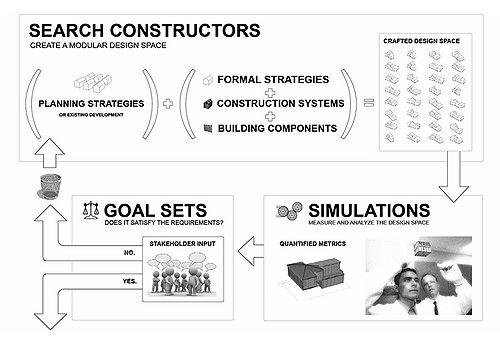The Future of Project Management with Generative Design

The digital technology has developed exponentially in the past few years and the construction industry has to understand the trends that comes with this development as some of the new technologies have come to disrupt the industry like the case with the transition from CAD to BIM. Some companies have been living after the principle "disrupt or die" in order to follow the demands and the competition from the market however overall, the construction industry is still lagging behind other industries when it comes to adopting new digital technologies [2]. McKinsey&Company has in a great report recently stated that one of the main subjects to focus on is to infuse digital technology and advanced automation. [3]
Generative design is a technology that has the purpose to mimic the natures evolutionary approach to design thus it is a radical new way of doing design propositions compared to the traditional way. Described shortly, the generative design concept is about expressing the design intent and purpose through e.g. planning strategies, formal strategies or building components, then get a computer to automatically explore all the options to improve e.g. materials, accuracy of cost and schedule estimates, manufacturing methods and risks thus streamlining the workflow of design, enabling more structured monitoring of projects and raise the transparency when the schedule is included. This allows the companies to explore a wider range of designs as based on criteria or rules and by this rethinking the design and engineering processes with e.g. a greater focus on constructability and productivity.
Today the construction industry is met with new requirements from the clients and this often happens when the client strives for innovation. With generative design the client, contractor, manufacturer and the stakeholders can be included in an integrated process.
This article will mainly focus on the general aspects of generative design and how it possibly will disrupt the project management thus it will not focus on a specific tool, as the technology is progressing extremely rapidly. The potentials and the limitations with the new technology are also discussed with respect to project management.
Contents |
The Big Idea

Application
Limitations
Annotated Bibliography
References
- ↑ Autodesk (2017). https://autodeskresearch.com/projects/dreamcatcher. (10-06-2017)
- ↑ Rob Leslie-Carter, John McGlynn, and Andrew Edkins (2017). Future of project management. Arup and The Bartlett Faculty of the Built Environment at UCL and Association for Project Management 1, 21–24.
- ↑ McKinsey&Company (2017). Reinventing construction: A route to higher productivity. McKinsey Global Insitute 1, 8–10.
- ↑ Architectureresearchlab (2012). https://autodeskresearch.com/projects/dreamcatcher. (10-06-2017)